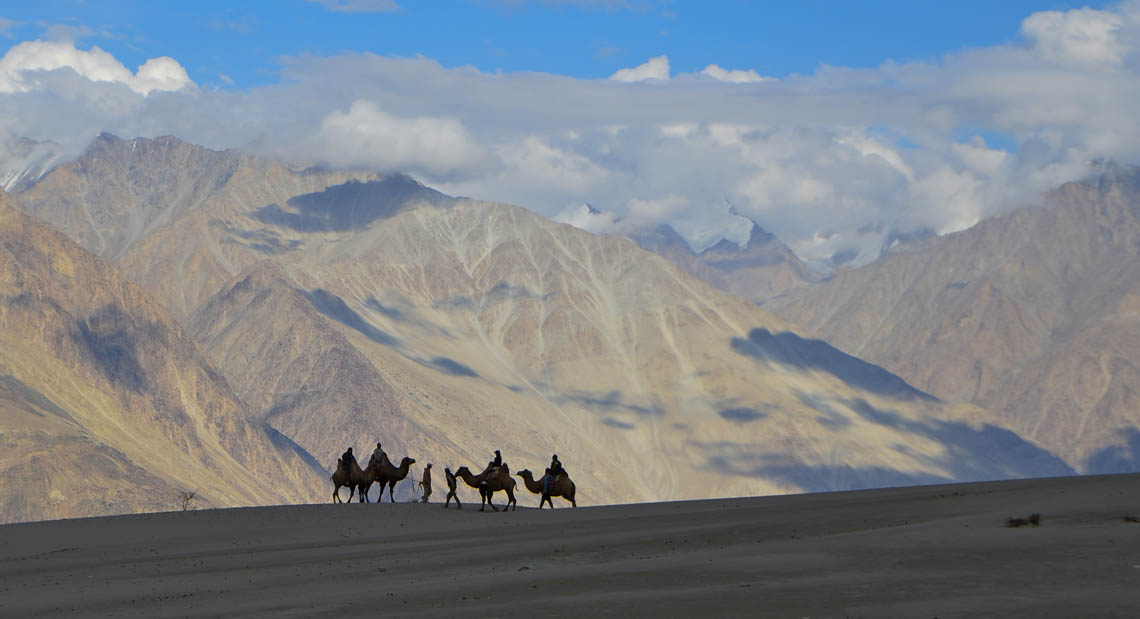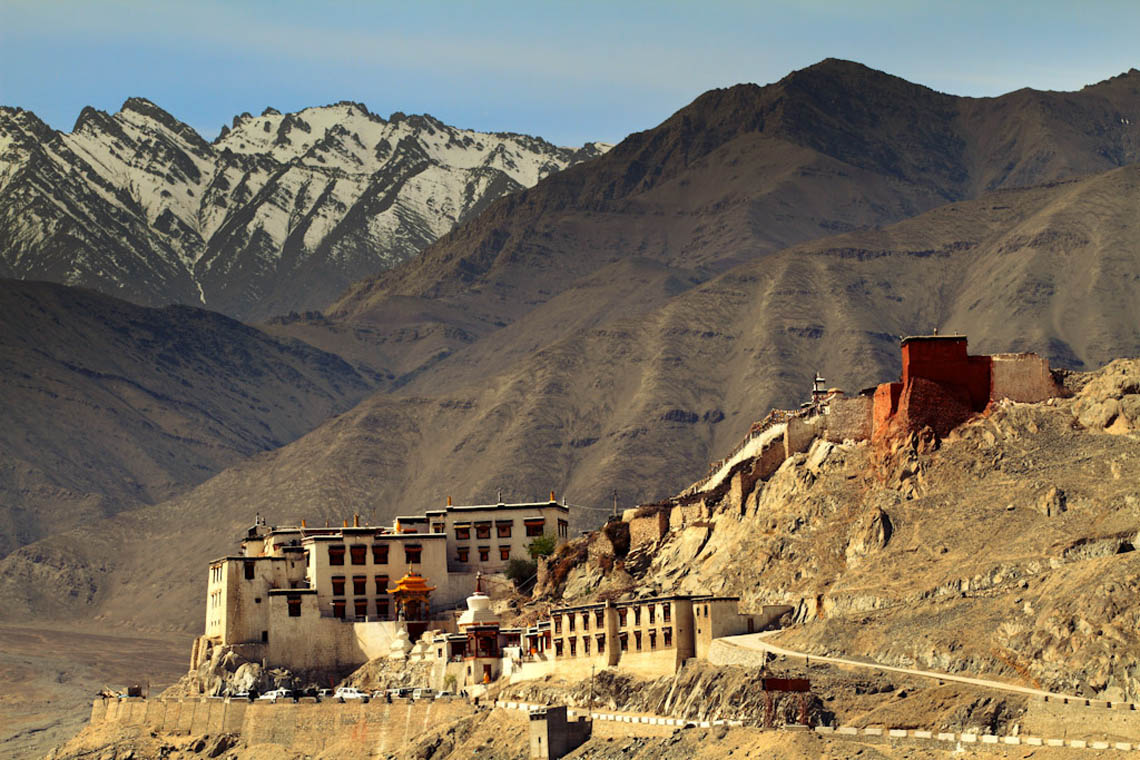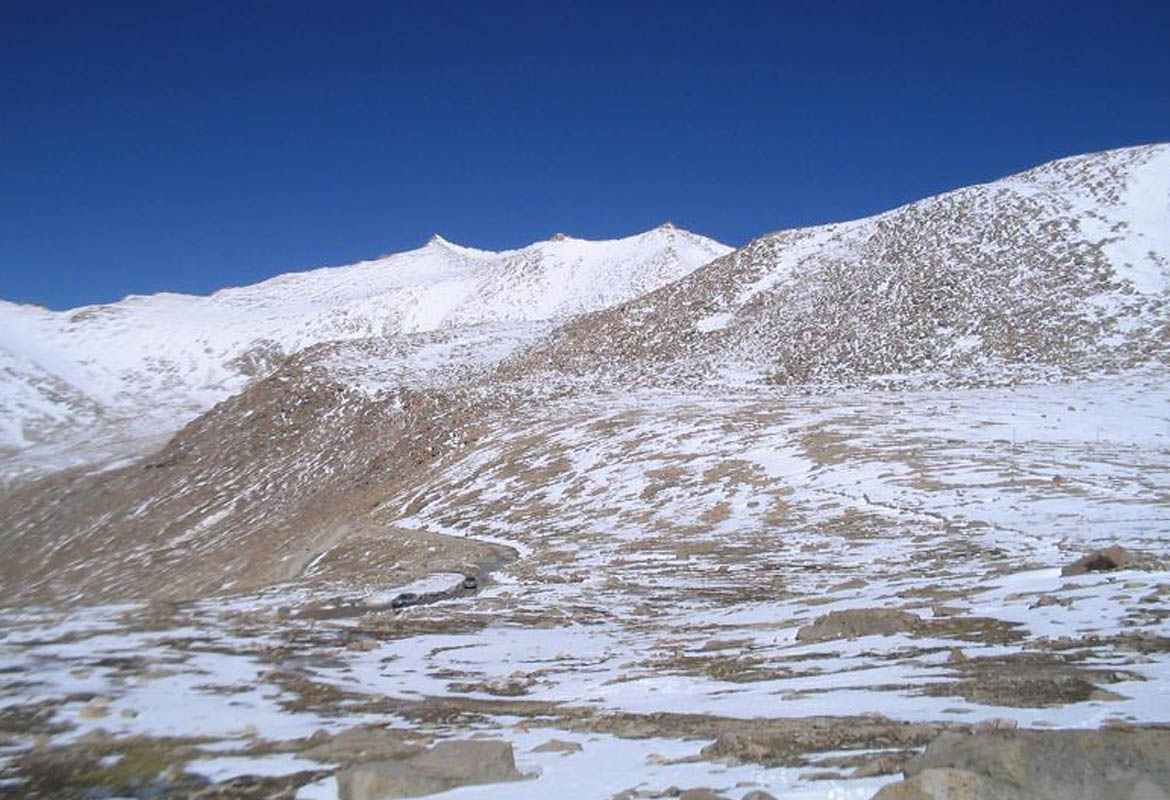Leh the erstwhile capital of the kingdom of Ladakh is now a dream destination of many and the Mecca of adventure enthusiasts! Leh, one of the coldest deserts in the world is located at a distance of 434 Kms from Srinagar and 474 Kms from Manali (Himachal Pradesh).At the time of reorganization of districts in 1979 Ladakh was divided into Leh and Kargil and now Leh district is synonymous with Ladakh and vice-versa!
Attractions:

Nubra Valley: is a tri-armed valley located to the north east of Ladakh valley. Diskit the capital of Nubra is about 150 km north from Leh town, the capital of Ladakh district, India. Local scholars say that its original name was Ldumra (the valley of flowers). The Shyok River meets the Nubra or Siachan River to form a large valley that separates the Ladakh and Karakoram Ranges. The Shyok river is a tributary of the Indus river. The average altitude of the valley is about 10,000 ft. i.e. 3048 metres above the sea level. The common way to access this valley is to travel over the Khardung La pass from Leh town. Non-locals require an Inner Line Permit (obtainable in DC office, Leh town) to enter Nubra.

Thikse Gompa or Thikse Monastery: (also transliterated from Ladakhi as Tikse, Tiksey or Thiksey) (thiksok Nambar tak pe ling) is a Tibetan Buddhist monastery of the Yellow Hat (Gelugpa) sect, located on top of a hill, approximately 19 kilometres east of Leh[ in Ladakh, India. It is noted for its resemblance to the Potala Palace in Lhasa, Tibet and is the largest gompa in central Ladakh.[ The monastery is located at an altitude of 3,600 metres (11,800 ft) in the Indus valley. It is a 12-storey complex and houses many items of Buddhist art such as stupas, statues, thangkas, wall paintings and swords. One of the main points of interest is the Maitreya (future Buddha) Temple which is installed to commemorate the visit of the 14th Dalai Lama to this monastery in 1970. A 15 metres (49 ft) high statue of Maitreya, the largest such statue in Ladakh, covering two storeys of the building is deified in the monastery. A nunnery is also part of the complex.

Shanti Stupa: is a Buddhist white-domed stupa (chorten) on a hilltop in Chanspa, Leh district, Ladakh, in the north Indian state of Jammu and Kashmir. It was built in 1991 by Japanese Buddhist Bhikshu Gyomyo Nakamura . The Shanti Stupa holds the relics of the Buddha at its base, enshrined by the 14th Dalai Lama himself . The stupa has become a tourist attraction not only due to its religious significance but also due to its location which provides panoramic views of the surrounding landscape. The Shanti Stupa was built by both Japanese Buddhists and Ladakh Buddhists. Original idea was stated by Nichidatsu Fujii (Fujii Guruji) in 1914. The mission of Nichidatsu Fujii was to build Peace Pagodas and temples over the world and try to resurrect Buddhism back in India.

Leh Palace: overlooks the Ladakhi Himalayan town of Leh, modelled on the Potala Palace in Lhasa, Tibet. The palace was built by King Sengge Namgyal in the 17th century, but was later abandoned when Dogra forces took control of Ladakh in the mid-19th century. The royal family moved to Stok Palace. Leh Palace is nine storeys high; the upper floors accommodated the royal family, the stables and store rooms were in the lower floors. The palace, a ruin, is currently being restored by the Archaeological Survey of India. The palace is open to the public and the roof provides panoramic views of Leh and the surrounding areas. The mountain of Stok Kangri in the Zangskar mountain range is visible across the Indus valley to the south, with the Ladakh mountain range rising behind the palace to the north..

Magnet Hill: is a gravity hill located near Leh in Ladakh, India. The hill is alleged to have magnetic properties strong enough to pull cars uphill and force passing aircraft to increase their altitude in order to escape magnetic interference, while in fact, this is a purely optical effect caused by layout of the surroundings (see Gravity hill).The “magnet Hill” is located on the Leh-Kargil-Srinagar national highway, about 50 km from Leh, at a height of 11,000 feet above sea level. On its south side flows the Indus, which originates in Tibet and goes to Pakistan. The magnetic hill has become a popular stop for domestic tourists on car journeys.

Namgyal Tsemo Monastery or Namgyal Tsemo Gompa: is a Buddhist monastery in Leh district, Ladakh, northern India.Founded in 1430 by King Tashi Namgyal of Ladakh, it has a three-story high gold idol of Maitreya Buddha and ancient manuscripts and frescoes.The Monastery was featured in a television commercial for WorldSoccerShop.com in 2011.

Spituk Monastery: also better as Spituk Gompa or Pethup Gompa, is a Buddhist monastery in Leh district, Ladakh, northern India,The site of Spituk was blessed by the Arhat Nyimagung. 8 kilometres from Leh.[1] It was founded by Od-de, the elder brother of Lha Lama Changchub Od when he came to Maryul in the 11th Century. He introduced the monastic community.When Lotsewa Rinchen Zangpo (Translator) came to that place he said that an exemplary religious community would arise there and so the monastery was called spituk (exemplary).During the time of Dharma raja Gragspa Bum-Ide the monastery was restored by Lama Lhawang Lodos and the stainless order of Tsonkhapa was introduced and it has remained intactas such till present. Founded as a Red Hat institution, the monastery was taken over by the Yellow Hat sect in the 15th century.The monastery contains 100 monks and a giant statue of Kali (unveiled during the annual Spitok festival).


